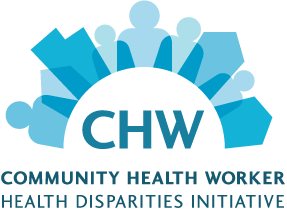Chile
“This training has made my dream come true. I was trained as a teacher but I never worked because I was too shy to talk in front of people. Now, I feel confident. I can teach people about heart health.” —Promotora from Chile

In Chile, the project was implemented in Chillán Viejo under the name Vivamos con un Corazón Saludable. The two strategies implemented were Strategy 1 (train-the-trainer) and Strategy 2a (community education).
The project team trained a total of 45 women as community health workers (CHWs) through 10 sessions within a 3-month period. Twenty-seven participants completed the pre-test before the start of the training (June 2008) and the first post-test a week after the training (August 2008). Subsequently, 15 participants out of the pool of 27 were selected to implement Strategy 2a in their communities. These 15 CHWs attended extra training sessions to review the manual and sharpen their skills for delivering the education sessions in the community. They also completed a second post-test after the implementation of Strategy 2a in August 2009.
For Strategy 2a, 16 trained community health workers (CHWs) hosted a total of 108 education sessions, reaching 408 participants, across 18 different community sites. Community participants completed a questionnaire to evaluate the community education workshops.
Results
The data from the implementation of the CHW initiative in Chile show that participants’ overall knowledge scores improved significantly after implementation of Strategy 1. The increase in terms of how often CHWs reported adopting heart healthy food–related behaviors was greater after the implementation of Strategy 2a than after the implementation of Strategy 1. The difference could be due to having to teach what was learned to community members, the additional training sessions for CHWs implementing Strategy 2a, or a combination of both.
Following the implementation of Strategy 2a, a large majority of community participants reported being completely satisfied with the education sessions and rated them as being of the highest quality.
- Trained CHWs (N=27) increased their heart health knowledge by 15 percentage points and increased intent to adopt heart healthy behaviors by 17 percentage points.
- Nearly 100 percent of community participants (N=408) thought that the topics of the sessions presented by the CHWs were useful, and 94 percent reported being satisfied with the program.
- In 2009, the project team helped CHWs organize themselves as a nongovernmental organization (NGO) that offers services in community and primary health care settings. This sustainability action made the group eligible to apply for community development funds from the municipality to continue their education and outreach activities.
- In 2010, the Public Health Regional Plan of Bio-Bío on Cardiovascular Health included the work of community health workers to organize health activities for children in kindergarten, first, and second grades, and for parents and caregivers in the Chillán Viejo area.
Last Updated: June 2014






